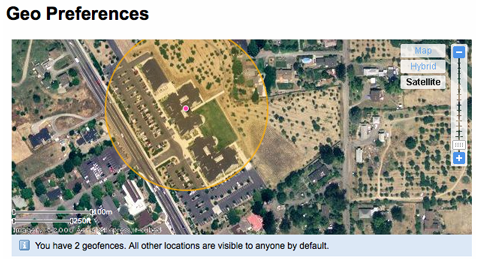Here’s what caught my attention in the payment space this week.
Financial Times drops iOS app
 There are at least two big issues involved in The Financial Times’ decision to pull its iPad and iPhone apps from the iOS App Store this week: one is about data; the other is about money. The FT, along with other publishers, has complained that the key sticking point in Apple’s new requirement that all purchases, including subscriptions, go through the App store, has been the question of who controls the relationship with the subscriber. The publishers see these as their readers, and they want to know everything about them. And when readers upgrade or renew their subscriptions, the publishers want to deal directly with them. The view from Cupertino is different: these readers appear to be iTunes subscribers making an in-app purchase. For delivering this consumer to the app maker (the FT in this case) Apple would like its 30% cut of revenue. That may have been a factor in the FT’s decision, though it seems the amount of money it would have had to give up — Robert Andrews at PaidContent.com figured it at $1.63 million at the high end — would have been fairly insignificant to FT’s parent company Pearson (and even more so to Apple with its billions in cash).
There are at least two big issues involved in The Financial Times’ decision to pull its iPad and iPhone apps from the iOS App Store this week: one is about data; the other is about money. The FT, along with other publishers, has complained that the key sticking point in Apple’s new requirement that all purchases, including subscriptions, go through the App store, has been the question of who controls the relationship with the subscriber. The publishers see these as their readers, and they want to know everything about them. And when readers upgrade or renew their subscriptions, the publishers want to deal directly with them. The view from Cupertino is different: these readers appear to be iTunes subscribers making an in-app purchase. For delivering this consumer to the app maker (the FT in this case) Apple would like its 30% cut of revenue. That may have been a factor in the FT’s decision, though it seems the amount of money it would have had to give up — Robert Andrews at PaidContent.com figured it at $1.63 million at the high end — would have been fairly insignificant to FT’s parent company Pearson (and even more so to Apple with its billions in cash).
The FT’s withdrawal comes as no surprise. Its online and print versions have been encouraging readers all summer to dump their iOS apps and switch to FT.com’s “web app” — its HTML5 site that displays nicely on the iPhone and iPad. The Wall Street Journal reported that more than 550,000 users have the web app. PaidContent’s Andrews speculated that the web app’s adoption may have been spurred by a promotional offer earlier this summer granting full access to the site. (FT.com is primarily a paid-subscription site, allowing only 10 free articles to registered users every 30 days.)
Lest we wonder if “the pink ‘un” knows what it’s doing in walking out on Apple and its 200 million store members, we should note that FT.com has run successfully on its paid subscription model for more than 10 years, even during the days when most mainstream news publications believed they could never charge for online content. Some publishers have come around to the FT’s model, most notably The New York Times, which resumed charging for full access to online content earlier this year.
What’s more, the FT says it hasn’t completely abandoned Apple and, according to a Reuters report, still plans to distribute future apps in its store, including one for its luxury weekend magazine, “How to Spend It.” Apparently, those are subscribers that the FT doesn’t mind sharing with Apple.
Flickr’s geofencing: setting access based on location
Last week, I wrote about geofencing in the context of Placecast’s service to announce deals and other offers when subscribers enter a virtually delineated space. This week, Flickr rolled out another interesting use of geofencing: automatically setting privacy restrictions on photos based on where they were taken. Flickr’s blog explains the new feature, and creating a geofence and linking it to access preferences is a quick and easy process.

Flickr’s geofencing is a mashup of two services that its members are already familiar with: geotagging photos and setting limits on who can see them. But in combining these two simple features, Flickr (and parent Yahoo) will offer many consumers the first glimpse of a new degree of control they will gain over the intersection of their digital and physical worlds: setting controls over what happens when they move from one location to another.
As a bonus, there’s a nice post on code.flickr describing the details of the feature and the fun process the coders went through to pull it together: “We met at Nolan’s house, ate a farmer’s breakfast, and brainstormed.”
Is daily deal fatigue getting you down?
Robert Hof has a compelling column on Forbes: “5 Reasons Daily Deals are Tanking — and 3 Reasons They’re Not Dead Yet.” Movements this week among the category’s top players would seem to confirm the ambiguity of that headline. Facebook has said it will stop its four-month old Deals program and Yelp said it would scale its program back (CEO Jeremy Stoppelman said “it hasn’t been all rainbows and unicorns“). Meanwhile, Google appeared to be ratcheting up its Offers program, even promoting an offer on its legendarily sparse home page ($5 tickets to New York’s American Museum of Natural History). And Groupon continued to storm toward its anticipated IPO.
I tend to agree with one of Hof’s main points: too many offers are for expensive, bucket-list or birthday-party events, like flying in a hot air balloon or learning to scuba dive. Google Offers appears to take a more budget-friendly approach, offering things that people really buy every day. Google launched its Offers in Portland in June with a $3 deal at Floyd’s coffee, and it continues to promote cheap recession-friendly luxuries, like $7 worth of frozen yogurt. But even Google Offers suffers from an excess of kayak rental offers.
I have to wonder if all the wine-tasting and helicopter ride offers are part of the
reason why Groupon has seen its web-based traffic drop by half since June, as reported by Experian Hitwise. It may be that while there is a continuous appetite for bargains on things we consume every day (like coffee and bread), it’s more difficult to sustain interest in endless offers for boot camps and laser-based body slimming.
Got news?
News tips and suggestions are always welcome, so please send them along.
If you’re interested in learning more about the payment development space, check out PayPal X DevZone, a collaboration between O’Reilly and PayPal.
Fence photo: Fence Friday by DayTripper (Tom), on Flickr
Related:
